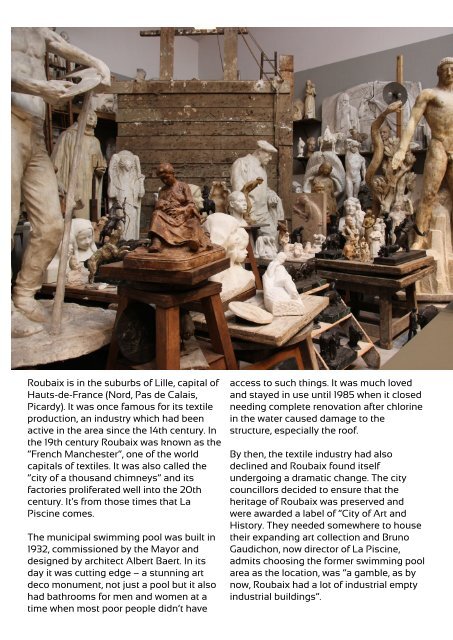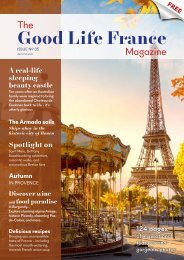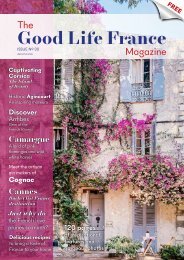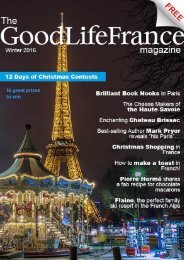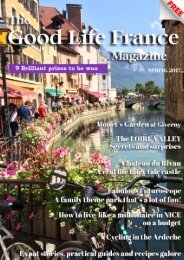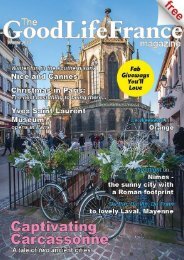Issue No. 21
This issue is bursting with fabulous features. The Loire Valley celebrates 500 years of French Renaissance, discover Marseille, Le Mans, Bordeaux, Nantes, the exquisite Chateau Vaux-le-Vicomte at Paris, an art deco swimming pool turned museum, fantastic recipes and much much more…
This issue is bursting with fabulous features. The Loire Valley celebrates 500 years of French Renaissance, discover Marseille, Le Mans, Bordeaux, Nantes, the exquisite Chateau Vaux-le-Vicomte at Paris, an art deco swimming pool turned museum, fantastic recipes and much much more…
- No tags were found...
Create successful ePaper yourself
Turn your PDF publications into a flip-book with our unique Google optimized e-Paper software.
Roubaix is in the suburbs of Lille, capital of<br />
Hauts-de-France (<strong>No</strong>rd, Pas de Calais,<br />
Picardy). It was once famous for its textile<br />
production, an industry which had been<br />
active in the area since the 14th century. In<br />
the 19th century Roubaix was known as the<br />
“French Manchester”, one of the world<br />
capitals of textiles. It was also called the<br />
“city of a thousand chimneys” and its<br />
factories proliferated well into the 20th<br />
century. It's from those times that La<br />
Piscine comes.<br />
The municipal swimming pool was built in<br />
1932, commissioned by the Mayor and<br />
designed by architect Albert Baert. In its<br />
day it was cutting edge – a stunning art<br />
deco monument, not just a pool but it also<br />
had bathrooms for men and women at a<br />
time when most poor people didn’t have<br />
access to such things. It was much loved<br />
and stayed in use until 1985 when it closed<br />
needing complete renovation after chlorine<br />
in the water caused damage to the<br />
structure, especially the roof.<br />
By then, the textile industry had also<br />
declined and Roubaix found itself<br />
undergoing a dramatic change. The city<br />
councillors decided to ensure that the<br />
heritage of Roubaix was preserved and<br />
were awarded a label of “City of Art and<br />
History. They needed somewhere to house<br />
their expanding art collection and Bruno<br />
Gaudichon, now director of La Piscine,<br />
admits choosing the former swimming pool<br />
area as the location, was “a gamble, as by<br />
now, Roubaix had a lot of industrial empty<br />
industrial buildings”.


